Over the years I have really grown to distrust and dislike external intake strainers of either the scoop type or the non directional round type. The real danger in these devices comes when you have a blockage and can't get to the crud to clean it. They often require a dive over the side with a coat hanger but that does not always work.
In areas with high barnacle or muscle growth these creatures know no bounds and often take up residence in the "no mans land" hiding behind the screen. After spending nearly three hours one day, in really, really cold water, even with a wet suit, trying to get eel grass out of one, I vowed to never, ever have one again. Any time you dive in your risk goes up.
To ream out an intake from inside some good pre-planning can make this a dry and easy task. It can be done in under three minutes if done right. All you need is an intake hose that can be held up higher than the static waterline and a snake. Close seacock, remove hose from strainer, hold hose above water-line, open seacock and ream out with your snake, done!
The harsh reality of external strainers is that they can become can be a safety hazard, if they have not already. I find when intakes are plumbed properly there is little to no need for one, and there better straining options. You can far more safely ream out your intake from INSIDE the vessel if you don't have an external strainer and this can be a huge safety margin when you don't have to physically get into the water. In just one season here in Maine I was in the water three times with a coat hanger...:cussing:
If you're concerned about clogs, and not noticing them, you can insert a flow detector alarm on the intake hose or just pay close attention to your exhaust note. When it starts to sound a little hollow you'll know you have some flow issues.
Some reasons why I don't like them, some operator error, and some strainer error.....
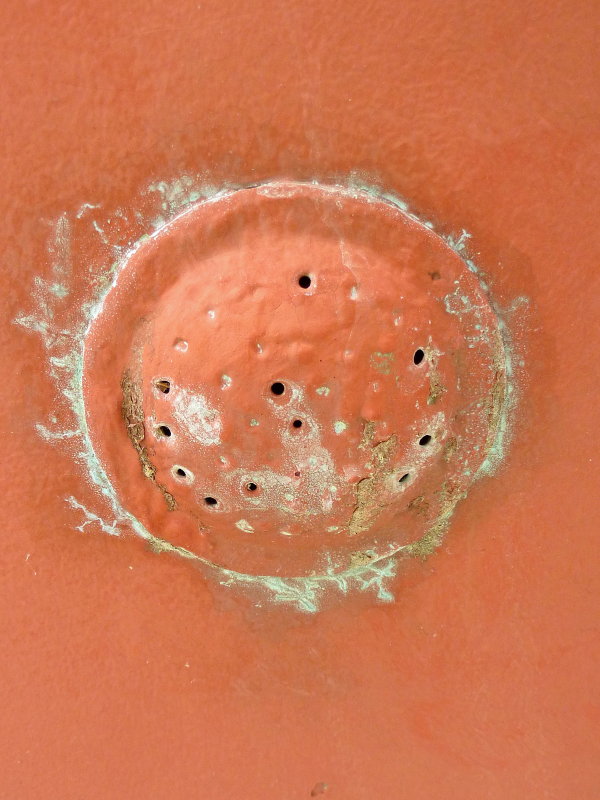
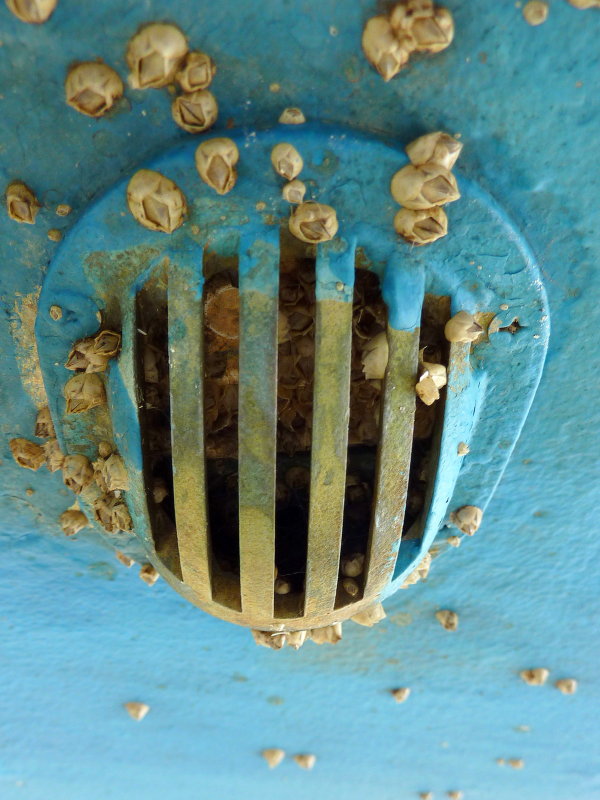
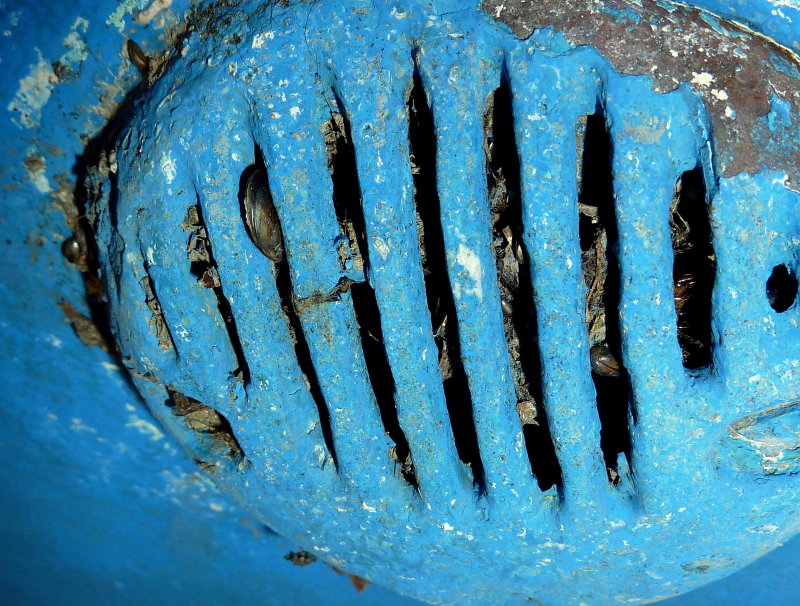
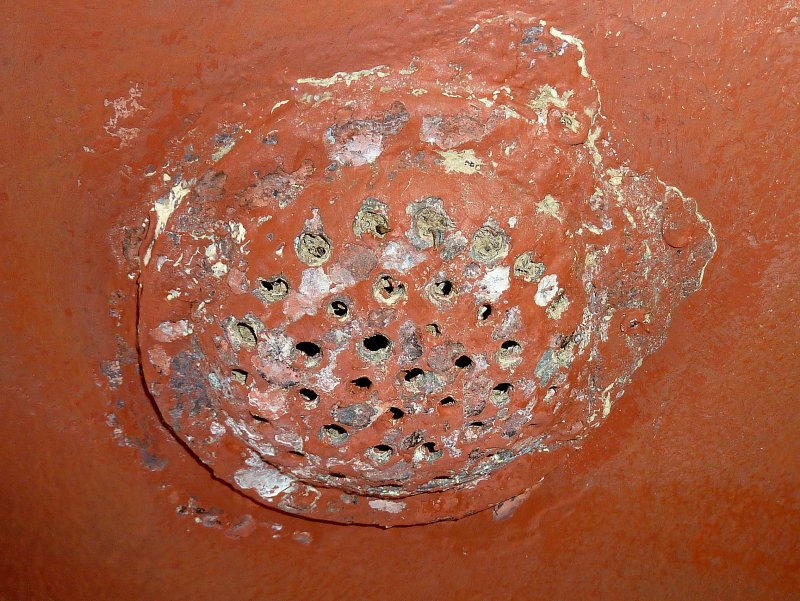
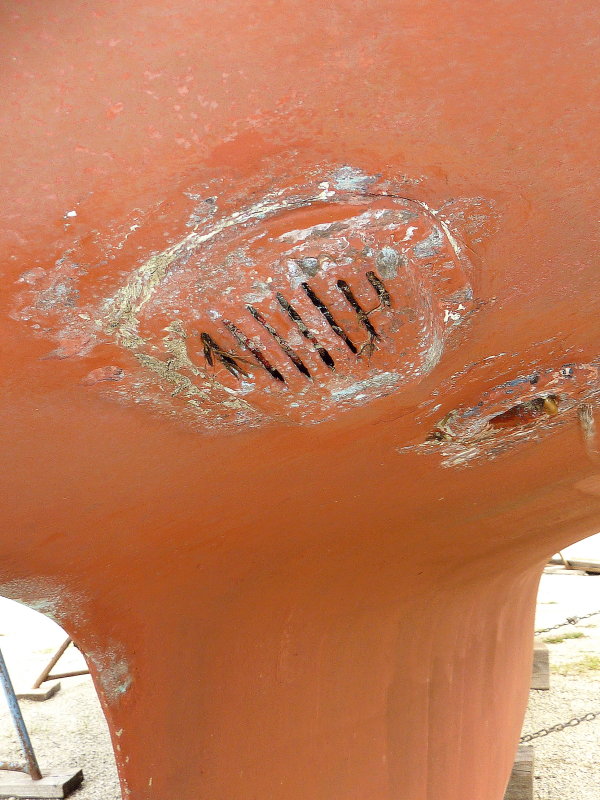
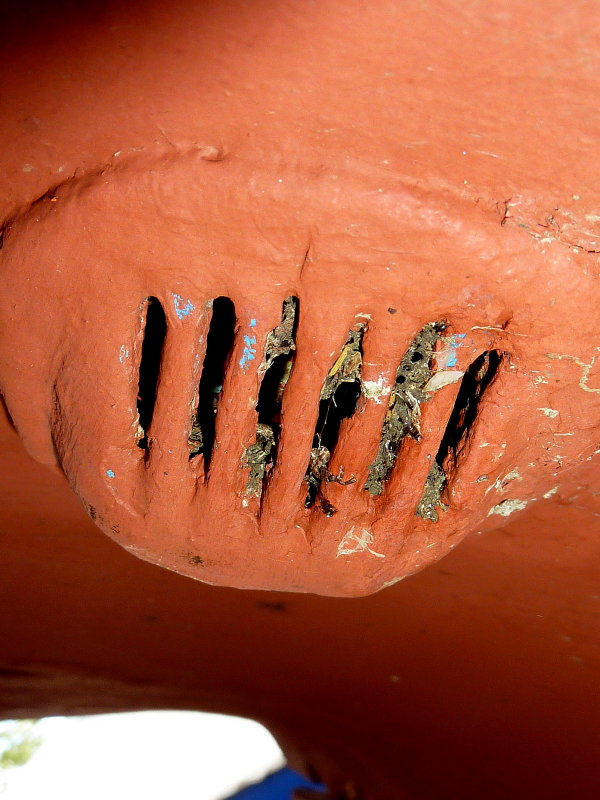
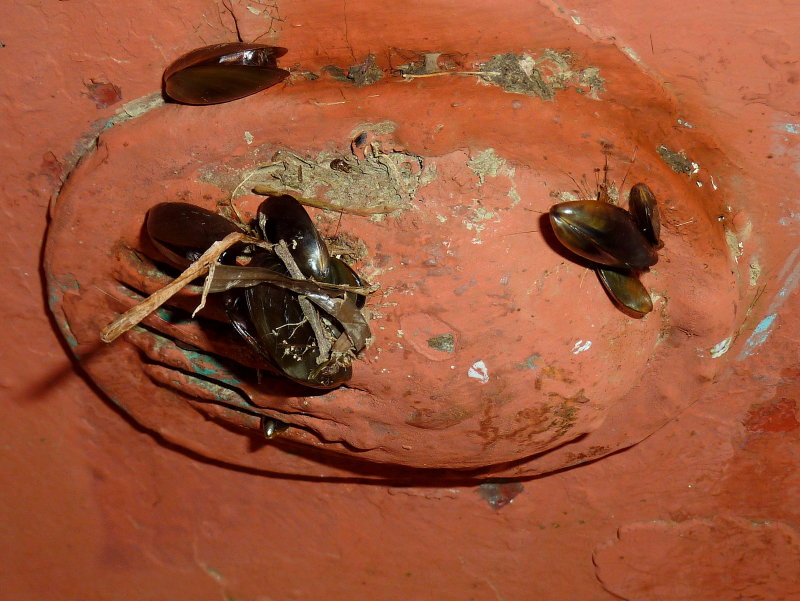
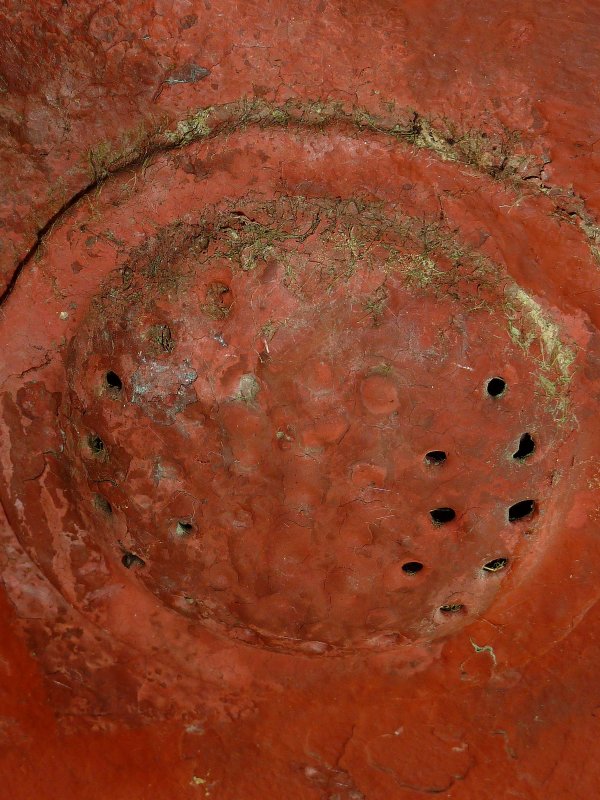
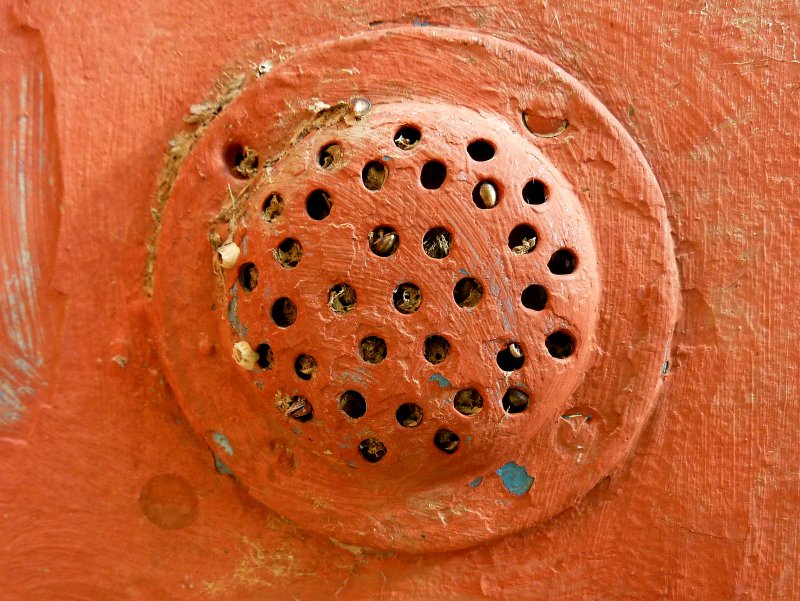

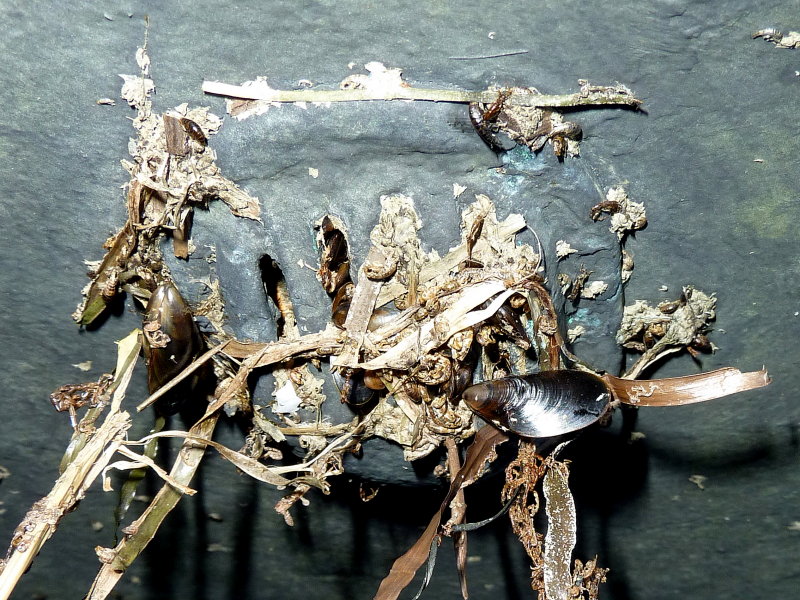

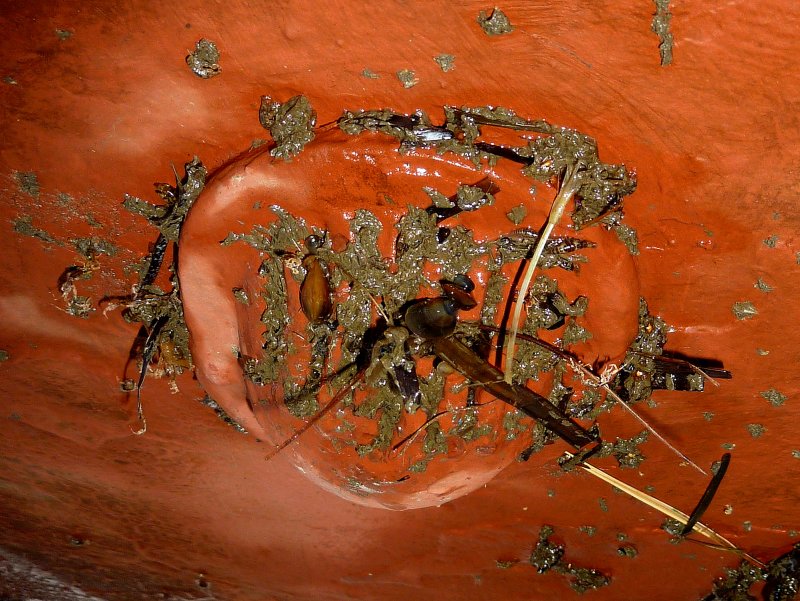

Beyond these photos many boat yards, some builders , and DIY's install the scoops style strainers BACKWARDS on sailboats. Many a sailor have actually caused their engines to become hydrolocked and dealt with water in the cylinders because of the improper installation of a scoop style strainer. If a scoop strainer faces forward you risk physically scooping sea water up and over the siphon break then filling the exhaust and eventually the cylinders of your engine with sea water. This is not healthy for the engine or your own piece of mind.
, and DIY's install the scoops style strainers BACKWARDS on sailboats. Many a sailor have actually caused their engines to become hydrolocked and dealt with water in the cylinders because of the improper installation of a scoop style strainer. If a scoop strainer faces forward you risk physically scooping sea water up and over the siphon break then filling the exhaust and eventually the cylinders of your engine with sea water. This is not healthy for the engine or your own piece of mind.
This strainer, like many out there, is another potentially expensive mishap waiting to happen. All it takes is some rough weather and a good surf down a wave to fill your engine with salt water. Facing them backwards is better but can also add unnecessary vacuum on the raw water pump. Sailboats should ideally have round, non-directional strainers, not scoops, or my favorite, none at all.
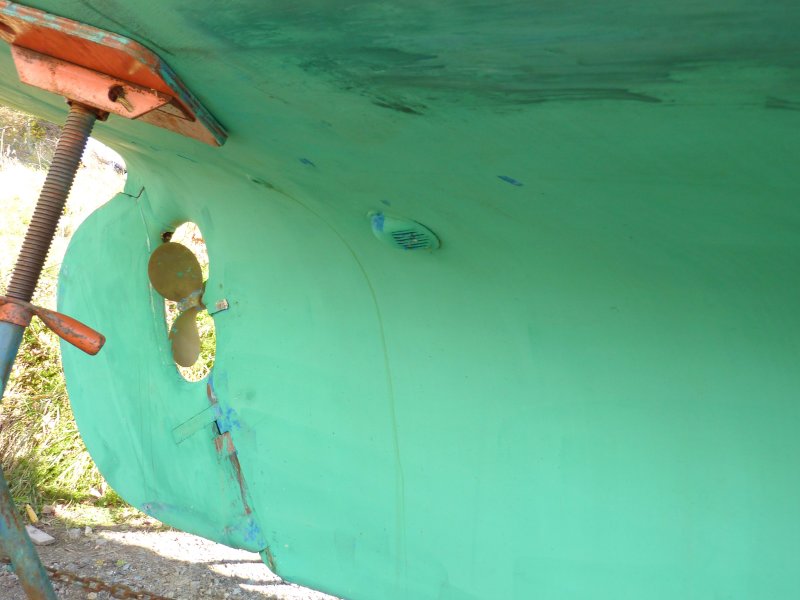
If you feel you absolutely must use one please make sure it can be opened. This one is made by Groco and Hamilton Marine stocks them.
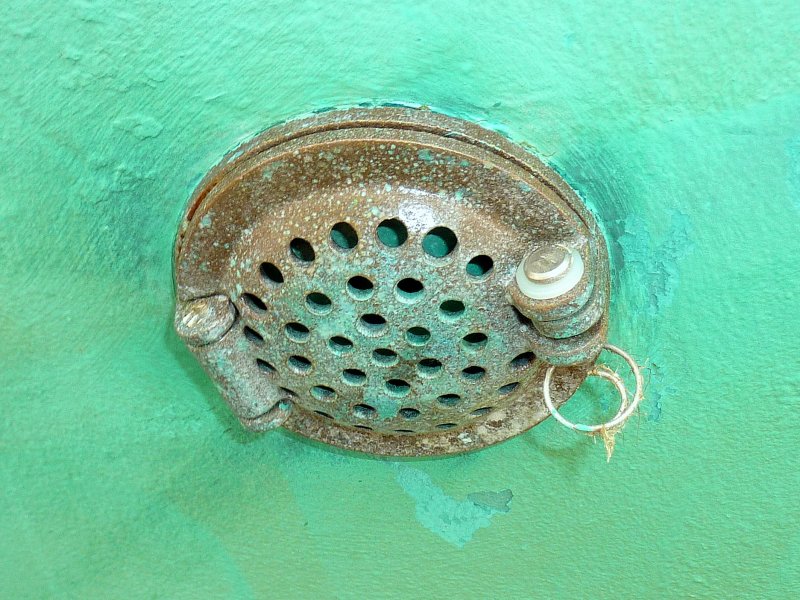
If it can not be opened they can be applied to the hull with a marine sealant so that in a emergency they can be poked off with a dowel from inside the boat. I prefer a fiberglass tent pole.. While you do lose the strainer you don't risk life and limb jumping in the water to free a clog in a remote or potentially rough location.
Sailboat intended strainers are round, non-directional, and have small holes. Scoop strainers are ideally intended for power boats.
External strainers are absolutely not clog proof or growth proof. If they can't opened it may be next to impossible to clear without removal of the external strainer screen. The worst of the external strainers are where the strainer is actually integral to the thru-hull fitting, and can't be opened, or even removed, without physically cutting it apart......
A mid season haul out, at a cost of $460.00, to deal with an external strainer clog = OUCH!!!!
A raw water intake that can be un-clogged from INSIDE the vessel = PRICELESS
In areas with high barnacle or muscle growth these creatures know no bounds and often take up residence in the "no mans land" hiding behind the screen. After spending nearly three hours one day, in really, really cold water, even with a wet suit, trying to get eel grass out of one, I vowed to never, ever have one again. Any time you dive in your risk goes up.
To ream out an intake from inside some good pre-planning can make this a dry and easy task. It can be done in under three minutes if done right. All you need is an intake hose that can be held up higher than the static waterline and a snake. Close seacock, remove hose from strainer, hold hose above water-line, open seacock and ream out with your snake, done!
The harsh reality of external strainers is that they can become can be a safety hazard, if they have not already. I find when intakes are plumbed properly there is little to no need for one, and there better straining options. You can far more safely ream out your intake from INSIDE the vessel if you don't have an external strainer and this can be a huge safety margin when you don't have to physically get into the water. In just one season here in Maine I was in the water three times with a coat hanger...:cussing:
If you're concerned about clogs, and not noticing them, you can insert a flow detector alarm on the intake hose or just pay close attention to your exhaust note. When it starts to sound a little hollow you'll know you have some flow issues.
Some reasons why I don't like them, some operator error, and some strainer error.....














Beyond these photos many boat yards, some builders
This strainer, like many out there, is another potentially expensive mishap waiting to happen. All it takes is some rough weather and a good surf down a wave to fill your engine with salt water. Facing them backwards is better but can also add unnecessary vacuum on the raw water pump. Sailboats should ideally have round, non-directional strainers, not scoops, or my favorite, none at all.

If you feel you absolutely must use one please make sure it can be opened. This one is made by Groco and Hamilton Marine stocks them.

If it can not be opened they can be applied to the hull with a marine sealant so that in a emergency they can be poked off with a dowel from inside the boat. I prefer a fiberglass tent pole.. While you do lose the strainer you don't risk life and limb jumping in the water to free a clog in a remote or potentially rough location.
Sailboat intended strainers are round, non-directional, and have small holes. Scoop strainers are ideally intended for power boats.
External strainers are absolutely not clog proof or growth proof. If they can't opened it may be next to impossible to clear without removal of the external strainer screen. The worst of the external strainers are where the strainer is actually integral to the thru-hull fitting, and can't be opened, or even removed, without physically cutting it apart......
A mid season haul out, at a cost of $460.00, to deal with an external strainer clog = OUCH!!!!
A raw water intake that can be un-clogged from INSIDE the vessel = PRICELESS
